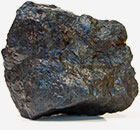Quality Magnetite Enables Dense Media Separation for Scrap Metal Recycling and Potash Production
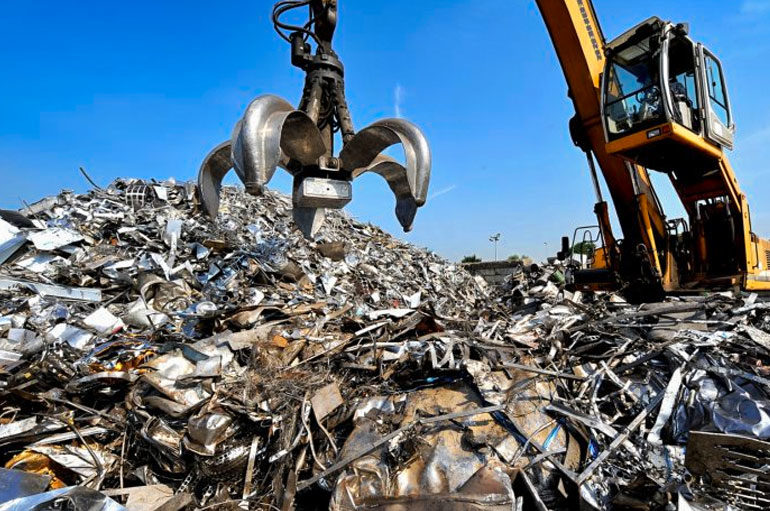
Ferrous oxide’s magnetic properties make it the perfect material to separate impurities from valuable metals and minerals
Quality magnetite is a powerhouse product in a variety of industries. It functions as everything from a filter to a protective coating; its applications are nearly endless. Furthermore, researchers continue to discover new uses for magnetite in industries ranging from medical imaging to cosmetics.
In addition to finding brand new uses for magnetite, companies have also found ways to apply existing magnetite-related processes to different industrial applications. One of the most exciting examples of this industrial cross-pollination is the application of magnetite in dense media separation (DMS). Originally developed in the 1950s as a technique for refining coal, dense media separation now enjoys wide use in industries such as scrap-metal recycling and potash production.
When raw materials are extracted from mines, separating the desired product from unwanted waste materials can be a challenge. With magnetite, producers can use basic physics to separate the valuable from the worthless while reducing harmful and even toxic byproducts, through dense media separation. Before the development of complex DMS systems, separating valuable product from waste byproducts was challenging. Yet, DMS changed the refining process for any compound where the refined product varies in density from the unrefined product.
“Dense media separation is one of the most powerful applications discovered for magnetite” says George Hamilton, Operations Manager at Quality Magnetite. “Not only does the addition of magnetite allow for easier extraction of a purer end product, but the magnetite is also easy to reuse. Because of its magnetic properties, to remove the magnetite after the dense media separation is complete you can just apply a magnetic field.”
The best way to understand dense media separation is to imagine a prospector panning for gold in a river. The prospector swirls the pan filled with dirt and clay and water, watching as the heavier particles sink to the bottom and then filter out, leaving behind a fine dust of tiny gold flakes.
Now, imagine that you could change the specific density of the water so that the clay, dirt and sand floated on top while the heavier and more valuable gold particles sank to the bottom. This is what the addition of magnetite makes possible. All you have to do once you’re done is skim off the top, apply a magnetic field to the separation medium to remove the magnetite, and voila: gold.
Of course, the power of magnetite in dense media separation goes beyond coal and gold. Everyone from scrap-metal recyclers to potash producers is finding uses for this efficient, time-saving technique in their businesses.
Magnetite speeds scrap-metal washing and recycling
Scrap-metal recyclers face a tough challenge: how to remove the maximum amount of valuable shredded metals from the unwanted debris as quickly and efficiently as possible. Dense media separation is a miracle technique in helping to achieve this goal. DMS separates the more valuable shredded metals from the seat cushions, rubber and plastics used in automobiles.
And once extraction is complete, DMS continues to reveal its superiority as a process. Not only have scrap-metal recyclers saved time, but they can then easily remove the magnetite using magnets and store it for reuse in the next round of scrap-metal washing. This cuts down costs and reduces waste.
Ferrous oxide boosts potash production
Scrap metal recycling isn’t the only way magnetite-enabled dense media separation is helping boost industrial production. Producers of potash are also finding DMS to be a vital tool in isolating KCl from unwanted compounds. After extracting the potash from the earth, it needs to be purified. This is accomplished via a variety of techniques, one of the most important of which is DMS.
Through the addition of ground magnetite, producers can increase the density of the potash-containing brine, separating the potash from the sodium chloride that accompanies it.1 Once this is complete, magnets can remove the magnetite from the mixture, allowing it to be reused in future production. Just as in all industrial processes, the ability to reuse production materials translates into savings, savings that potash producers can pass on to their customers.
Find out more
When you work with Quality Magnetite, you’ll have access to our superior supply chain network and team of product experts, making sure you’ll have the right amount and type of product for your magnetite needs.
To learn more about the applications of magnetite in dense media separation and how you can apply it to your scrap recycling or potash production endeavors, get in touch with one of our expert sales staff today. The QMag team looks forward to hearing from you.
1 International Plant Nutrition Institute, “Potassium Fertilizer Production and Technology,” http://www.ipni.net/ipniweb/portal.nsf/0/68907f5d1e5922f8062577ce006ad872/$FILE/K%20Fert%20Prod%20&%20Tech%2011%2016%2010.pdf
Quality Magnetite Reduces Friction in Brake Pads and Semiconductor Equipment
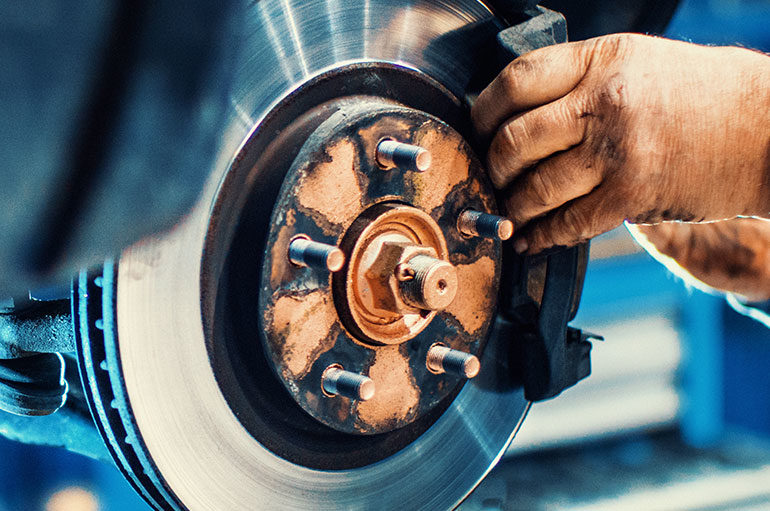
Magnetite is a key ingredient in solid lubricants and ferrofluid seals
The applications of magnetite are as numerous as there are industries. Whether it’s boosting solar cell efficiency, nourishing crops, or adding extra heft to sports equipment, ferrous oxide is truly a miracle substance, with researchers discovering new applications every year.
For instance, research indicates exciting applications for magnetite in the areas of friction reduction in brake pads and ferrofluid seals. Already, magnetite is a widely used solid lubricant in the manufacture of automotive brakes. As researchers Werner Österle and Andrey I. Dmitriev explain in their paper “The Role of Solid Lubricants for Brake Friction Materials1,” solid lubricants like magnetite “play a crucial role in friction stabilization and wear reduction” in automotive braking applications. The result is a smoother, safer experience for drivers, with brakes they can count on to respond when they most need them and lower costs in ongoing maintenance and replacement.
“Reducing and stabilizing friction is an important goal in a variety of industrial applications,” says George Hamilton, Operations Manager at Quality Magnetite. “Quality magnetite works to provide a reliable, affordable solid lubricant that manufacturers of every vehicle from consumer automobiles to heavy trucks can employ in their braking systems. We’re proud to provide a product that serves as such a key ingredient in increasing safety and decreasing wear.”
As an automotive manufacturer, you want to provide the consumer with brakes that will work in all conditions, under whatever kind of stress they might encounter. And you certainly don’t want brakes that squeak, groan or need replacing any sooner than necessary. By employing quality magnetite as a friction-reducing agent, you can give your customers the smooth, dependable experience they expect.
Magnetite presence in ferrofluids reduces friction on semiconductor production equipment
As other research reveals, however, automotive braking is just one important implementation of ferrous oxide’s friction-reducing properties. In a paper titled “Magnetite (Fe3O4): Properties, Synthesis, and Applications2,” researchers at Lehigh University found the following potential applications for magnetite’s lubricant qualities:
“Ferrofluids have some very interesting potential applications in various mechanical/electrical situations. Rotating shafts protruding into low- or high-pressure chambers oftentimes exert a great deal of friction on traditional rotating mechanical seals (commonly known as Orings). Such seals are employed in rotating anode X-ray generators and vacuum chambers operated by the semiconductor industry. Ferrofluid seals secured with permanent magnets provide firm seals with minimal friction.”
The use of magnetite in ferrofluids is a topic we’ve covered before, something you have to see to believe. Their potential as a friction-reducing agent in ferrofluid-based seals in the semiconductor industry is yet another exciting potential application for our ferrous oxide products, one that represents the tremendous promise of magnetite-based ferrofluids across industries.
This is good news for manufacturers. According to a recent report from PwC3, the demand for semiconductors is only growing in an increasingly digitized world, making reliable, impeccably functioning production equipment essential for semiconductor manufacturers. The application of magnetite in reducing wear and tear on the anode X-ray generators and vacuum chambers used to produce semiconductors is an exciting opportunity for manufacturers of semiconductor production equipment. Equipment that is more friction-resistant means less time on maintenance and more time on production, leading to increased customer satisfaction and decreased costs.
Quality Magnetite offers the best supply solution for automotive braking and ferrofluid seals
Whether you work in the automotive industry, the semiconductor manufacturing equipment industry, or any other industry that needs a high-quality, dependable basis for solid lubricants, Quality Magnetite is here to get your the company the ferrous oxide it requires.
When you work with Quality Magnetite, you’ll be able to take advantage of our extensive network of material suppliers, ensuring the highest-quality iron oxide every time. We have the most technologically advanced processing capabilities in North America, allowing for customization of products to meet our customers’ most precise requirements.
Combined with our large custom fleet of trucks and constantly updated logistics processes, Quality Magnetite is the best equipped company in the industry to provide the ferrous oxide for all your automotive braking and ferrofluid seals needs.
Learn more about Quality Magnetite
Discover more about Quality Magnetite and how it can aid you in brake manufacturing and ferrofluid seal production by visiting our information portal. Or, if you have questions, don’t hesitate to contact us today.
1http://www.mdpi.com/2075-4442/4/1/5/htm
2http://preserve.lehigh.edu/cgi/viewcontent.cgi?article=1002&context=cas-lehighreview-vol-15
3https://www.pwc.com/gx/en/industries/technology/publications/semiconductor-industry-analysis-and-projections.html
Quality Magnetite Helps Reduce Power Plant Emissions
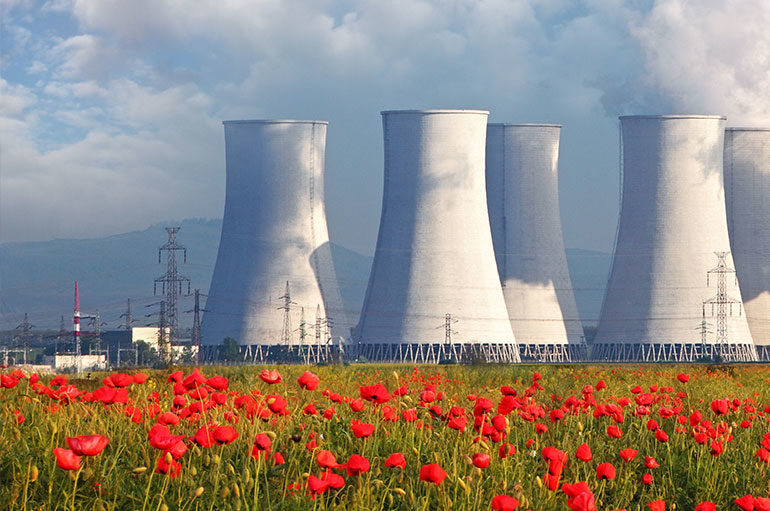
Iron oxide captures toxic chemicals and carbon dioxide through chemical bonding and chemical looping
An exciting new application for magnetite is revolutionizing the production of electricity, and Quality Magnetite plays a critical role in power plant emissions reduction. Recently, scientists discovered that iron oxide’s unique properties make it an effective agent for removing harmful compounds generated during the production of electricity.
Magnetite has dozens of uses in helping to make the world a safer, healthier place, from purifying drinking water to enabling innovative cancer treatments using ferrofluids. Now, research shows iron oxide can play a powerful role in chemical bonding and chemical looping — two novel techniques that promise to revolutionize the way power plants control and contain the toxic chemicals produced during operations.
“We’re proud to produce products that help reduce environmental impact and carbon footprint,” says George Hamilton, Operations Manager at Quality Magnetite. “Our ferrous oxide provides the raw material crucial to the innovations that will ensure a cleaner, greener energy future. Power plant emissions reduction is yet another exciting potential application for our magnetite, and we stand ready to supply energy producers as demand grows.”
Below, you’ll learn more about the exciting potential chemical bonding and chemical looping have to reduce power plant emissions.
Iron oxide is an important ingredient in chemical bonding emissions reduction
The utility industry has been searching for an affordable and effective way to reduce mercury and other toxic emissions for years. Now, new technologies are emerging that substantially reduce emissions at coal-fired power plants. Through the addition of magnetite and a variety of other products, power plants can reduce mercury, nitrogen oxide and sulphur dioxide emissions through chemical bonding.
The bonding occurs during the cooling process, capturing the harmful materials so that they become part of the ash rather than being released into the air. In a world where energy demand is growing and governments are increasingly conscious of toxic emissions, this implementation of magnetite is a welcome technological advance for power plants looking to cut harmful emissions in an efficient, cost-effective manner.
Quality magnetite plays a key role in CO2-reducing chemical looping technique
Magnetite is also revolutionizing the coal-powered electricity industry through an exciting process that produces vast amounts of heat and pure, extractable carbon dioxide that is easy to capture and sequester. Through a process called chemical looping, energy is produced more cleanly than with traditional, open-burn techniques.
The process avoids emissions created when traditional coal plants burn coal in the open air. instead, chemical looping is a process that takes the coal and introduces it to oxygen-bearing materials, like iron oxide, in a closed system. Iron reacts with the coal, and the energy bound in the coal breaks the bonds between the iron and oxygen. Later in the reaction, iron interacts with air, and the chemical reaction produces heat, which is used to produce steam.
This reaction takes place at much lower temperatures than traditional coal burning, and it produces almost no nitrogen oxide and a nearly pure stream of carbon dioxide, which is then siphoned off for underground storage.
Though currently in stages of research, construction is underway in Alabama on a 250-kilowatt coal-powered plant using the new technique. Researchers believe that chemical loop plants may be one of the cheapest ways to reduce carbon dioxide emissions, and this just may be the future of cheap, carbon-reducing energy production.
Quality Magnetite offers the best supply solution for power plants
Regardless of your power production volume, Quality Magnetite is here to provide you with all of the ferrous oxide necessary to help you create a cleaner, lower-emission footprint for your plant.
When you work with Quality Magnetite, you’ll be able to take advantage of our extensive network of material suppliers, ensuring the highest-quality iron oxide every time. We have the most technologically advanced processing capabilities in North America, allowing for customization of products to meet our customers’ most precise requirements.
Combined with our large custom fleet of trucks and constantly updated logistics processes, Quality Magnetite is the best-equipped company in the industry to provide the ferrous oxide for all your emissions reduction needs.
Learn more about Quality Magnetite
Discover more about Quality Magnetite and how it can aid you in creating cleaner energy and reducing emissions by visiting our information portal. Or, if you have questions, don’t hesitate to contact us today.
Quality Magnetite Is Critical to Providing Vital Employee Protections
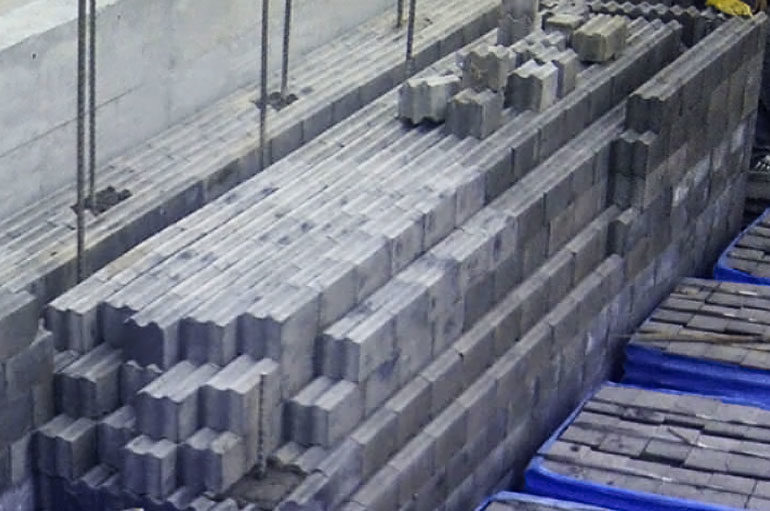
Whether it’s in protective structures or microns-thin films, magnetite plays an important role in preventing workplace exposure to harmful radiation
It’s no secret that radiation can save lives and improve healthcare. Just consider the necessity of an X-ray to repair that fractured wrist or the effectiveness of radiation treatments on certain cancers.
Prolonged exposure to this life-saving radiation, though, can prove harmful — especially to the caregivers tasked with providing care. When it comes to protecting employees from the harmful effects of radiation in the workplace or excess heat in a refractory, Quality Magnetite is on the forefront.
“Our magnetite can be used in concrete aggregate, into building products and into surface coatings for protection against the harmful effects of radiation and heat,” says QMag. “We understand the importance of providing a high-quality iron oxide for these vital applications.”
When it comes to providing protective barriers, research is beginning to show that magnetite-rich compounds and products are a cost-effective way to limit exposure and provide the protection employees need. Here are a few points to consider:
Magnetite in concrete is an affordable and effective gamma-ray blocker. Researchers have known for some time that magnetite can be an effective shield against harmful gamma rays. At the same time, concrete is one of the most affordable and proven construction materials available. Recent developments have demonstrated that magnetite, combined with concrete aggregate, is as effective at blocking harmful gamma rays as lead bricks — and it’s far cheaper.
Magnetite is an effective additive for radiation-blocking plastics. The need for thinner, flexible protective barriers has been apparent for decades, and researchers have been pursuing everything from thinner, woven lead vests to fabrics infused with particles to absorb harmful gamma rays. One of the most promising areas of progress has been in the polymer arena, where the Society of Plastics Engineers (SPE) reports that researchers are adding magnetite nanoparticles to plastic films as a form of gamma ray blocker. Here’s what SPE had to say about these cutting-edge films:
They are lighter than their metal counterparts and can be processed to achieve effective shielding for radiation associated with specific industries. They also combine the excellent functional properties of the nanoparticles with those of the host polymers. Incorporating even just a few percent of nanoparticles can dramatically change the properties.1
Magnetite-infused concrete is an effective heatsink. For centuries, concrete has been used as an effective barrier to heat. Now, thanks to researchers at Hanyang University, concrete is being examined as an effective conduit for the removal of excess heat. Researchers at Hanyang discovered that, by infusing concrete aggregate with high percentages of magnetite, the wonder material can be an effective heat transfer conduit — without the effects of cracking typical to concrete placed in high-heat situations. Here’s what they found:
For the work, magnetite with varying replacements of normal aggregates and steel powder of 1.5% of volume are considered, and the equivalent thermal conductivity is evaluated. Only when the replacement ratio goes up to 30%, thermal conductivity increases rapidly to 2.5 times.2
This bold application of magnetite has staggering implications in construction of refractories, industrial complexes and even nuclear reactors. When coupled with the radiological protections of similar products, magnetite and concrete is a winning combination.
Find out more
To learn more about the important breakthroughs in magnetite and radiation protection, get in touch with one of our expert sales staff today. The QMag team looks forward to hearing from you.
1 Society of Plastics Engineers “Magnetite nanocomposite films for radiation shielding
“http://www.4spepro.org/pdf/006050/006050.pdf
2 Advances in Materials Science and Engineering, Volume 2016 (2016), Article ID 952625.
http://dx.doi.org/10.1155/2016/9526251
Quality Magnetite Can Help Make a Great Paint

Magnetite additives enrich environmentally friendly anticorrosive paints and richer pigments
When it comes to paints and pigments, goals sometimes conflict. Paints need to improve the lifespan and durability of a surface, protecting it from harsh elements, and they also need to beautify surfaces and provide for pleasing aesthetics.
At Quality Magnetite, we’re on the forefront of providing a high-quality magnetite product to paint and pigment producers in order to help them develop richer, deeper colors and stronger, more effective protective surfaces. More importantly, our magnetite can help realize both goals in an environmentally friendly manner than traditional chemical processes.
“Magnetite is a tremendous additive for paints and pigments, and we’re a great source for the quality of product that manufacturers need,” says Bud May, Quality Magnetite VP. “Our customers rely on our products for quality, consistency and speed of delivery, and we’re excited to be exploring the emerging field of magnetite paint and pigments.”
Researchers around the globe are recognizing the benefits of magnetite to the paint and pigment production process. Here are just a few ways Quality Magnetite can help improve the process of making more durable paints and more vibrant pigments.
Particle size drives effectiveness of ‘doping’ elements
Researchers at the University of Antioch in Columbia examined the process of “doping” magnetite-enriched paints and pigments — a technique in which cadmium, copper or other metals are introduced during the manufacturing process to improve both richness of colors and a paint’s anticorrosive properties. As they examined the various techniques, researchers made a discovery.
“The particle size of magnetite pigments depends on the nature and quantity of the doping element,” the researchers reveal. “The synthesis procedure adopted resulted in pigments with particle sizes similar to micronized industrial particle sizes.”
Using a more consistent, smaller-sized magnetite particle like those produced by Quality Magnetite resulted in stronger surfaces, more durable anticorrosive properties and deeper, richer colors. At the same time, other researchers are finding that magnetite-enriched paints and pigments are more environmentally friendly.
An ancient process reduces environmental impacts of paints and pigments
If you’ve ever seen pottery from ancient cultures in North or South America, then you’ve seen a magnetite-based pigment. The process of using magnetite to create vibrant, durable colors is hardly new. What researchers are finding, though, is that magnetite-infused coatings are revolutionizing protective surfacing, especially where it counts — in marine environments.
The Royal Society of Chemistry recently published a report that outlined the power that magnetite-rich epoxy coatings have to protect steel in marine settings. Not only did magnetite help build better, less toxic coatings, but it also led to coatings that were surprisingly resilient and in many instances self-healing when damaged.
“The mechanism of self-healing characteristics of porous nanomaterials was elucidated using different analyses,” researchers stated. “The results suggested the formation of stable thin films on the cracks and holes of epoxy coats.”
The development of more environmentally-friendly self-healing coatings is an innovative and emerging field that Quality Magnetite is excited to play a small part in. As with many industrial applications, the consistency and quality of iron oxide seems to be a key element, and at Quality Magnetite, we specialize in processes and techniques that produce the highest quality most consistently.
Find out more
To learn more about how Quality Magnetite can help you and your company improve paints, pigments and coatings, get in touch with one of our qualified sales experts today. We look forward to hearing from you.
QMag Is a Great Partner for Sports Equipment Manufacturers

From football to bowling, Quality Magnetite products play an important role in athletics
You’ve probably seen the bracelets on wrists of football players — tiny disks of magnets that help improve circulation and restore freedom of movement to tight joints. At Quality Magnetite, it’s not just about magnets. Our products are an important component in many cutting edge sports.
“QMag works to stay abreast of changes in more than 80 industries — medical, construction, and even sports, where our products find their way into hundreds of products,” says George Hamilton, QMag Operations Manager. “We’re sports lovers, and knowing our products are a part of those sports we love makes us proud of what we do.”
Here are a few interesting and unexpected places you’ll find magnetite produced right here at QMag.
Bowling balls: Bowling balls are round, three holes for your fingers, and smooth, right? What you can’t see is that magnetite is an important component to making those balls curve, backspin and cut. Look inside a bowling ball, and you’ll find they’re filled with aggregates, shaped and molded to behave in certain ways. Without magnetite, the bowling balls wouldn’t be heavy enough to perform as expected. Magnetite provides mass where it’s needed and gives the balls the performance bowlers demand.
Golf clubs: For more than a decade, golf clubs have been getting lighter. Yet, reducing weight can’t reduce strength of the club. That’s why magnetite is one of the main ingredients in the alloys that manufacturers are using to achieve stronger, lighter clubs. When Tiger steps on the field, he can crush it with confidence, knowing his clubs will perform consistently under a variety of conditions, thanks in part to iron oxide.
Roller hockey skates: You’ve seen the skaters gliding effortlessly around the floor, knocking the puck about and scoring big wins. The skaters cut sideways and for just a second, the skates hum. That signature hum is thanks in no small part to magnetite — a crucial component of quality ball bearings. Those ball bearings help make sure that the skaters’ kicks perform well under pressure, and without quality iron ore, those ball bearings would break down and freeze up.
There are thousands of products, processes and technologies in the sporting goods arena where you’ll find iron oxide in all its forms. At QMag, we specialize in providing the highest quality in the fastest possible timetables, so that your business can remain ahead of the competition.
Learn more about how QMag can help you
If you think Quality Magnetite might be able to help, get in touch with one of our sales experts today to find out more.
Quality Magnetite Products Ideal for Agricultural Applications

Research shows iron oxide particles play a key role in improving crop yield and quality
Iron-rich compounds have long been a key component of successful agricultural development, and now, magnetite is leading the way to improved crop yields as farmers reduce — and even eliminate — harmful pesticide residues. As a leader in the magnetite industry, Quality Magnetite is a reliable source for high-quality ferro-particles for use in agricultural products across a host of crops.
The National Institutes of Health recently revealed that researchers in China have demonstrated iron oxide (Fe304) improves the availability of iron to peanut plants, reducing the need for additional fertilizers, which typically leach out of the sandy soils in which the plants thrive. Quality Magnetite is skilled at producing the kinds of iron-rich compounds farmers need to reduce pesticide and fertilizer use while enhancing crop yields.
Here are a couple of areas in which researchers are exploring the use of magnetic nanoparticles in agriculture.
Iron may speed the degradation of old, dangerous pesticides
The pesticide DDT has long been banned for use on agricultural products. Yet, decades later, residues of the chemical linger in soils. Writing in the journal Chemosphere, scientists noted that iron oxide shows a remarkable tendency to speed the breakdown of DDT.
Over time, the iron aids in breaking down the chemical and spiriting it away, restoring the soil to healthy and productive use. When coupled with other soil quality remediation techniques, iron can restore contaminated farm lands faster than other natural means, all without harming vital water sources.
Magnetite shown to improve soybean yields
Soybeans represent a $35 billion slice of the American agriculture industry, and production of this vital staple food has increased 15-fold since the 1950s. Recent research explored the effects of adding small amounts of magnetite nanoparticles to soils during the production of this important plant.
“It seems that the use of iron particles causes increasing pod and dry leaf weight and finally will increase total yield,” writes the lead scientist in the study, which was published in 2010 in Notulae Scientia Biologicae, an international journal of science.
As further research on these and other exciting findings continues, the use for magnetite in agriculture and soil remediation will continue to grow.
Learn more about Quality Magnetite
Discover more about Quality Magnetite and the hundreds of innovative applications for our magnetite products through our information portal. Or, if you have questions, you can contact us today.
Quality Magnetite Exploring Nano-Particle Medical Markets

Equipment advances will enable the creation of smaller, uniform magnetite particles
Quality Magnetite is poised at the forefront of an exciting and revolutionary new field of medical research and treatment. Magnetic Resonance Imaging — or MRI — is one of the most remarkable medical imaging tools ever created, and researchers believe that magnetite nanoparticles could take MRI to even greater heights.
By employing iron oxide nanoparticles as contrast agents, scientists anticipate using MRI to reveal the very shapes of cancer cells themselves. For these advances to become reality, ferrous oxide (FeO) particles must be uniform and incredibly small, which requires specialized equipment and cutting-edge manufacturing and quality control techniques. Quality Magnetite is keeping a close eye on the medical imaging industry as we consider this explosive new field of research.
“Right now, these techniques are still in the testing phase, but that could change at any moment,” says Quality Magnetite Operations Manager George Hamilton. “As one of the premier sources for quality, refined magnetite, we’re well-positioned to become a major provider of ferrous nanoparticles for medical imaging and contrast.”
Researchers have identified some of the benefits of magnetite for MRI, and as the science behind this emerging technology develops, here are just a few of the reasons these innovations are worth watching.
Magnetite imaging contrasts improve accuracy and detail
MRI machines use powerful magnetic fields to discern the subtle differences among tissue density, which allows radiologists to explore tiny slices of an individual’s anatomy, looking for everything from aneurysms to tumors. The paramagnetic properties of ferrous materials can improve the resolution of MRI machines because of the material’s unique properties and density.
Through the manufacture of high quality, uniform and uniquely shaped particles, scientists believe that magnetite will allow them to explore the shapes of tumors, improving radiation and chemotherapy treatments or allowing for more effective surgical solutions to invasive cancers. Also, because of some iron compounds’ unique interactions with certain compounds in blood and tissues, these ferro-particles may allow radiologists to diagnose and describe vascular conditions in much greater detail than ever before.
Biodegradable and biologically safe compounds decrease need for potentially toxic radiological or dye-based contrast agents
Current state-of-the-art contrast agents utilize potentially harmful substances, such as dyes and radioactive tracer elements, to improve resolution in MRI images and bring out hidden structures. Certain ferrous nanoparticles are biodegradable, however, and these tiny particles can be designed to move more freely throughout structures of the body.
Researchers believe these tiny compounds can one day be used to successfully diagnose and treat a host of cardiovascular and even neurological conditions, reducing or even eliminating the need for radioactive tracers and heavy, potentially toxic dyes. Magnetite nanoparticles are at the forefront of an amazing new frontier for medical imaging, and Quality Magnetite will be there to supply this need.
Learn more about Quality Magnetite
Discover more about Quality Magnetite and the hundreds of innovative applications for our magnetite products through our information portal. Or, if you have questions, you can contact us today.
Quality Magnetite Empowers Novel Magnetite Applications

From electronics to aviation, the future is bright for magnetite
At Quality Magnetite, we’re constantly watching for exciting and new uses of magnetite, whether it’s refinements in process technologies that have long relied on magnetite or discovering innovative ways magnetite can open up new markets and industries.
With the nano-revolution well underway, the demand for ferro-particles will increase in the coming years. That means finding and securing a reliable source for this finite resource is a vital step for companies and manufacturers who wish to remain on the forefront of technology.
“Magnetite plays a role in almost every major industry,” says Quality Magnetite Operations Manager George Hamilton. “From agriculture to the tech boom, magnetite is a key component of machinery, chemical manufacturing, monitoring and even heat abatement. And with the nano-scale applications of this material, the importance of magnetite will continue to grow in the coming years.” Here are just three of the hundreds of areas in which magnetite is playing a major role in progress.
Electronics components rely on magnetite. Almost every computer on the market requires magnetite to work. Whether it’s embedded in state-of-the-art chips or applied to microscopic moving parts, magnetite helps keep computers working and, without it, the electronics revolution would grind to a halt.
Magnetite helps control pollution. Renewable energy is on the rise, but for the immediate future, fossil fuels still reign supreme. Coal accounts for almost 40% of the electricity produced in the U.S. each year. Thanks to closed-loop processes made possible by magnetite, though, energy producers are reducing harmful emissions.
Ferrofluids reduce vibration and control sound. Magnetic ferrofluids are revolutionizing mechanical systems, thanks to their unique abilities to dampen vibration and reduce unwanted sound. From helicopters to buildings, engineers are employing ferrofluids to control unwanted vibrations from rotors and protect structures from earthquakes.
Magnetite is an ancient material, but it’s still on the forefront of almost every industry, and at Quality Magnetite, we’re looking to the future. From medicine to space propulsion systems, when it comes to magnetite, even the sky isn’t the limit.
Learn more about Quality Magnetite
For more than 50 years, Quality Magnetite has been a leading provider of magnetite and other ferrous compounds. Discover more about our company and the hundreds of innovative applications for our magnetite products through our information portal. Or, if you have questions, you can contact us today.
